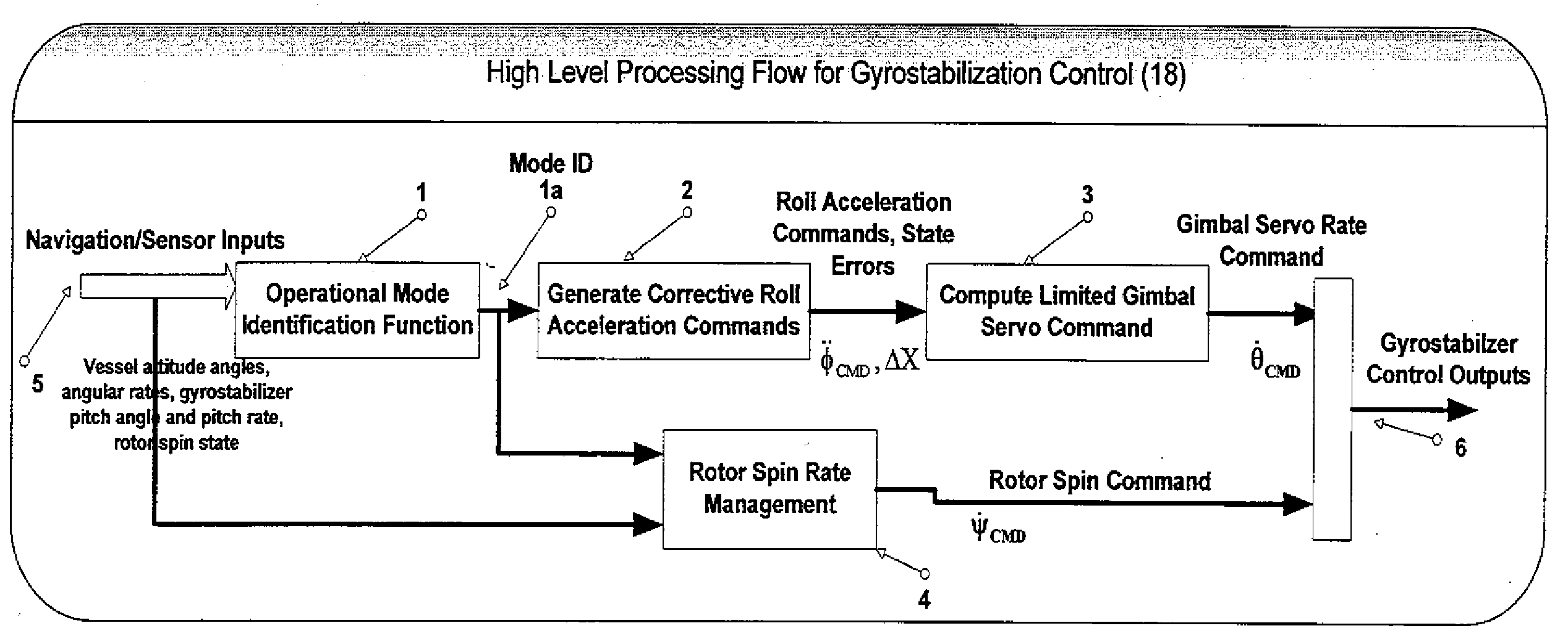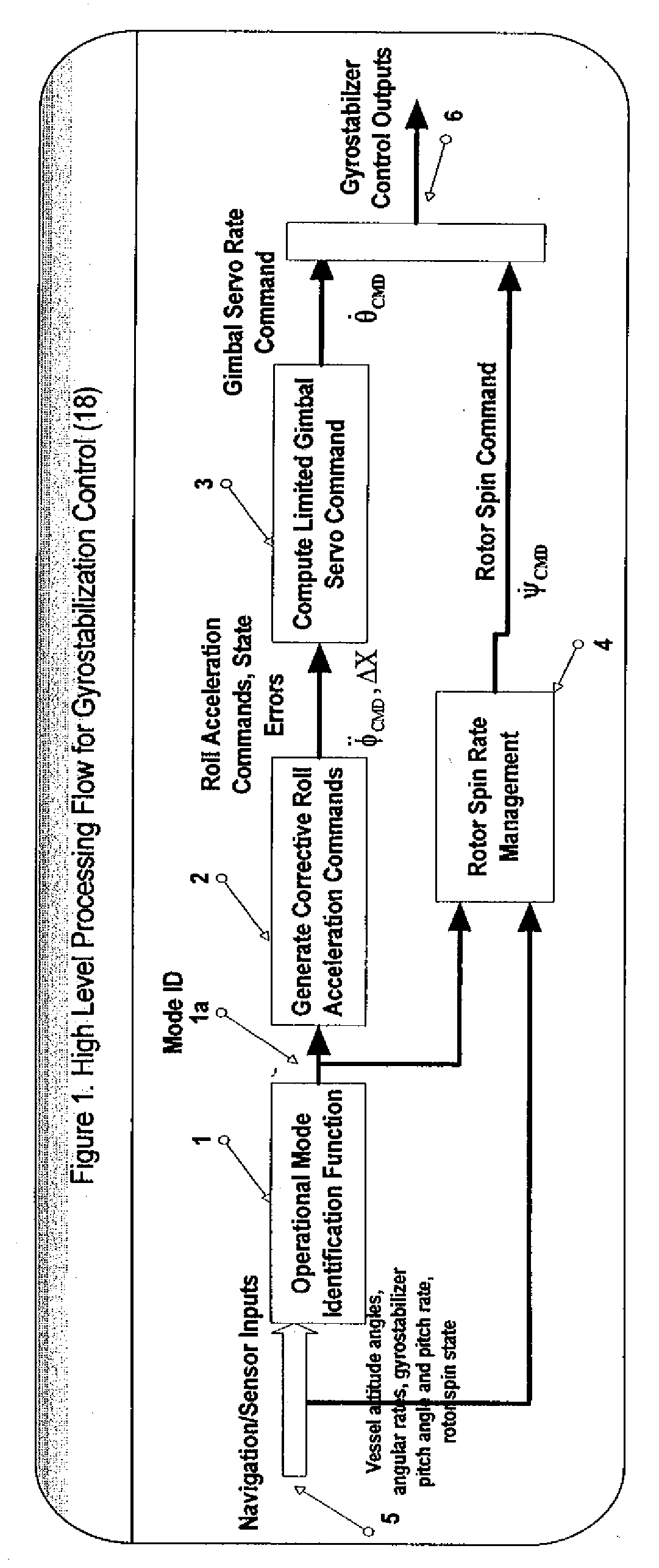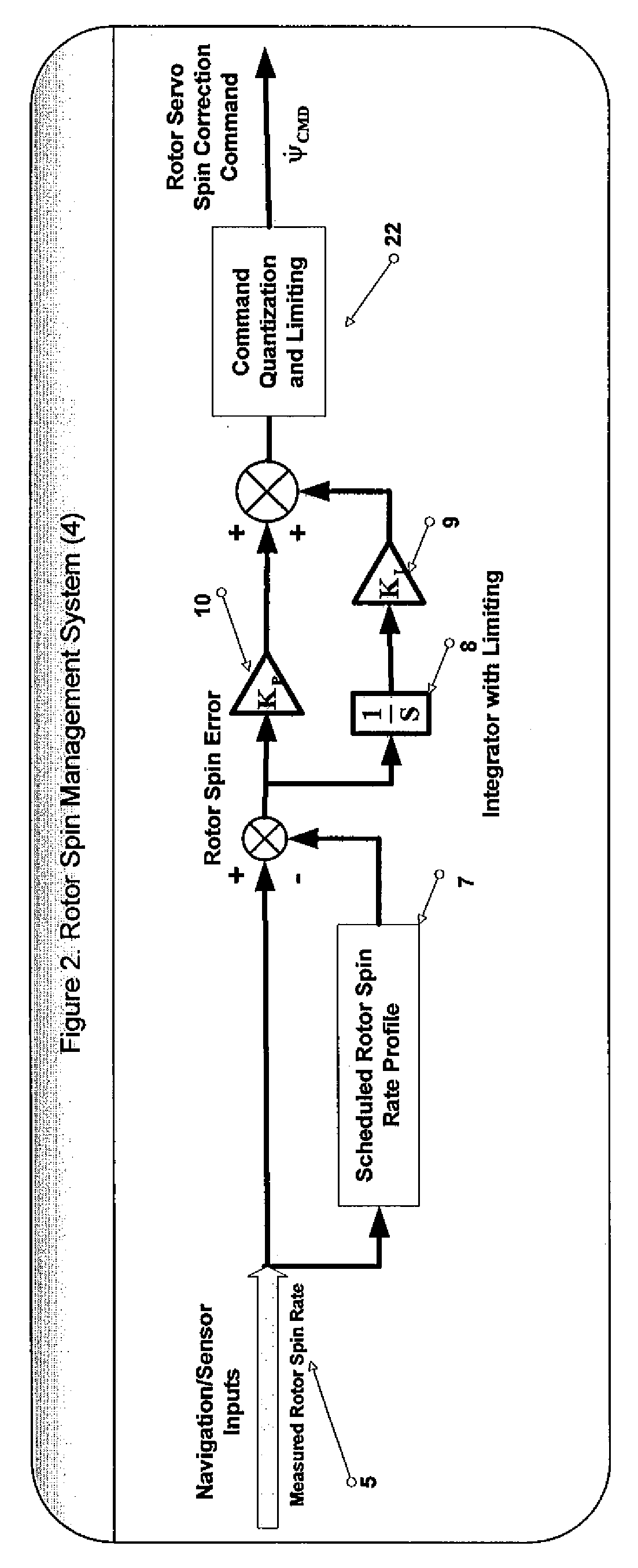Control system for a vessel with a gyrostabilization system
a control system and gyrostabilization technology, applied in the direction of electric devices, process and machine control, instruments, etc., can solve the problems of people and animals experiencing motion sickness, inefficient at low speeds, and prior gyroscope-related anti-rolling systems that are too large for relatively small vessels
- Summary
- Abstract
- Description
- Claims
- Application Information
AI Technical Summary
Benefits of technology
Problems solved by technology
Method used
Image
Examples
Embodiment Construction
[0041]A high-level process flow for the general control system architecture is shown in FIG. (1). A navigation function (described briefly below) is responsible for the processing of raw sensor data and producing measurements (or mathematically optimal estimates from a navigation filter) of key vessel states such as attitude angles, attitude (angular) rates and possibly velocity. Also, sensors on the gyrostabilizer system may provide feedback of sensed gimbal pitch angle and pitch rate as well as rotor spin rate.
Basic Navigation / Sensor System Requirements
[0042]The goal of the navigation function is to provide the controller with all required state information. This may include (but not be limited to) vessel inertial attitude, angular (attitude) rates in roll, pitch and yaw, vehicle velocity vector, vehicle position vector and depth measurements. Also, sensors can be employed to provide feedback on the gyrostabilizer rotor rate, gimbal pitch angle, gimbal pitch rate and gimbal motor ...
PUM
 Login to View More
Login to View More Abstract
Description
Claims
Application Information
 Login to View More
Login to View More - R&D
- Intellectual Property
- Life Sciences
- Materials
- Tech Scout
- Unparalleled Data Quality
- Higher Quality Content
- 60% Fewer Hallucinations
Browse by: Latest US Patents, China's latest patents, Technical Efficacy Thesaurus, Application Domain, Technology Topic, Popular Technical Reports.
© 2025 PatSnap. All rights reserved.Legal|Privacy policy|Modern Slavery Act Transparency Statement|Sitemap|About US| Contact US: help@patsnap.com



